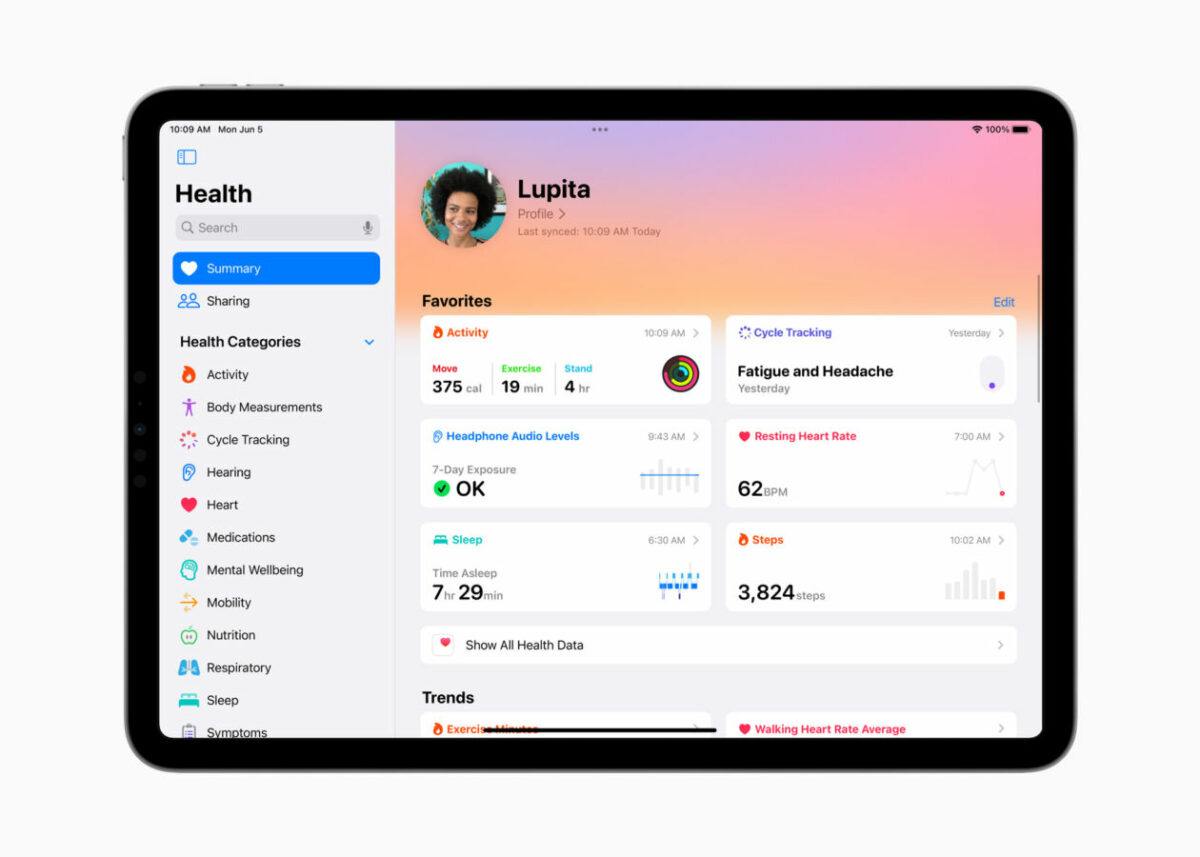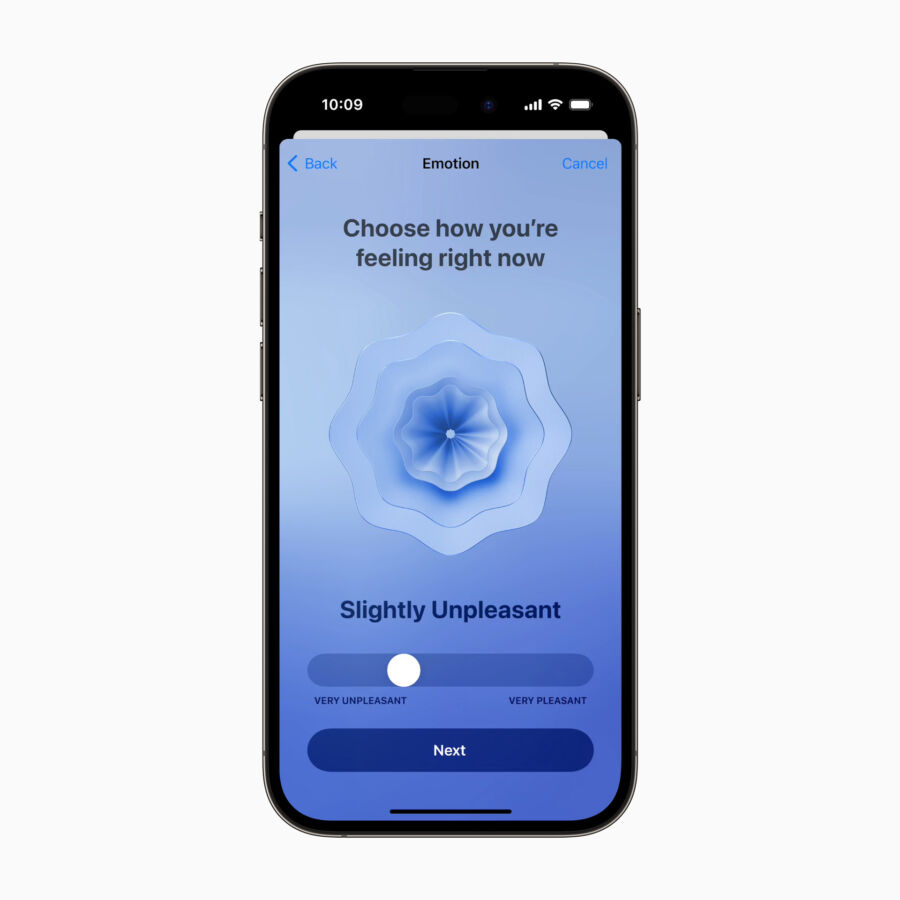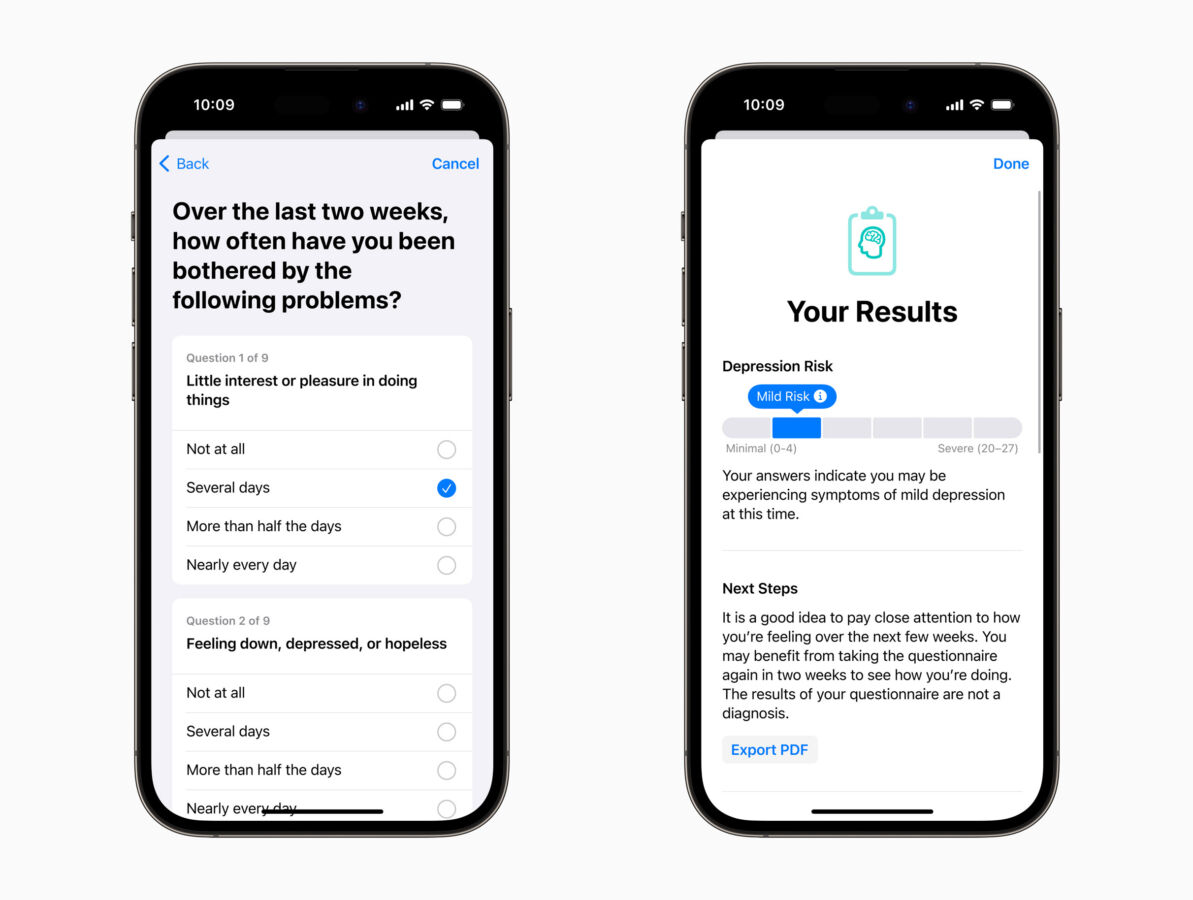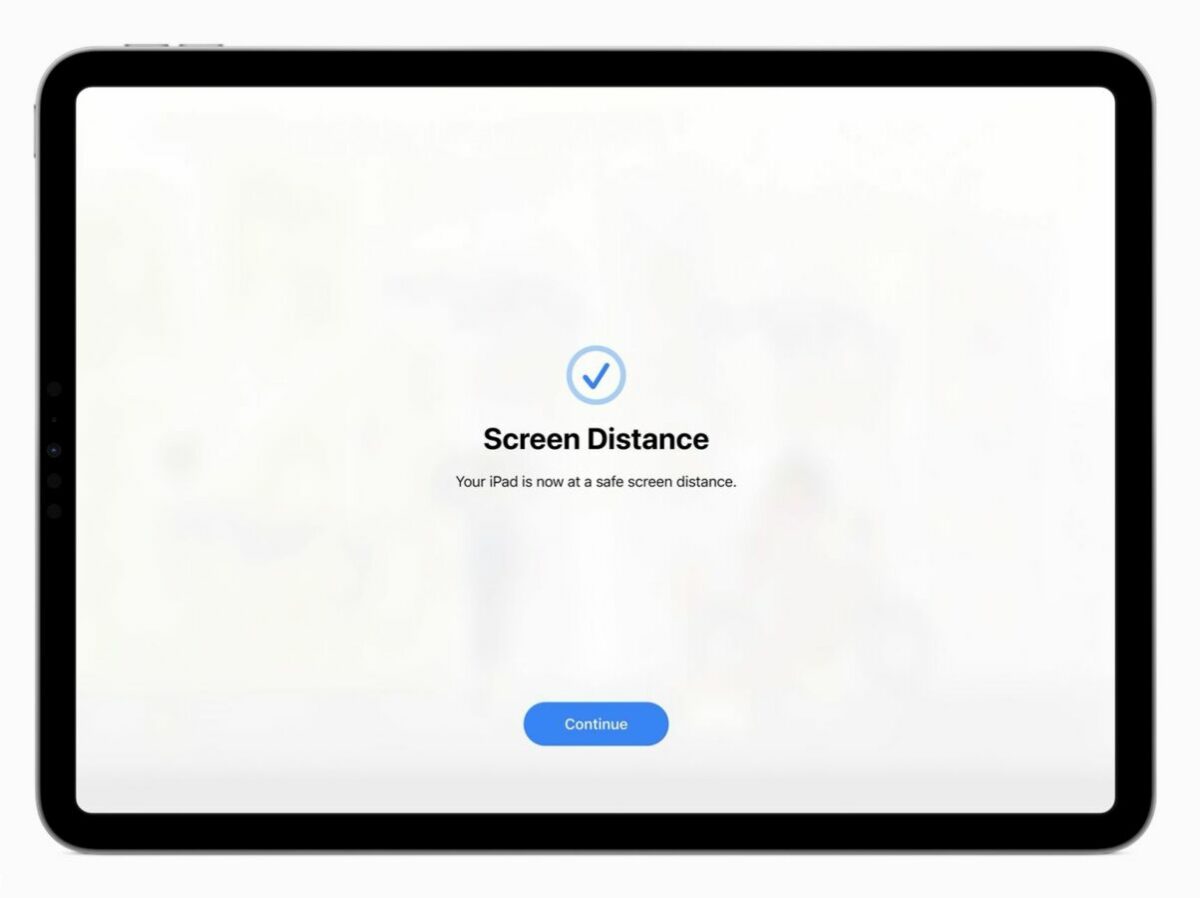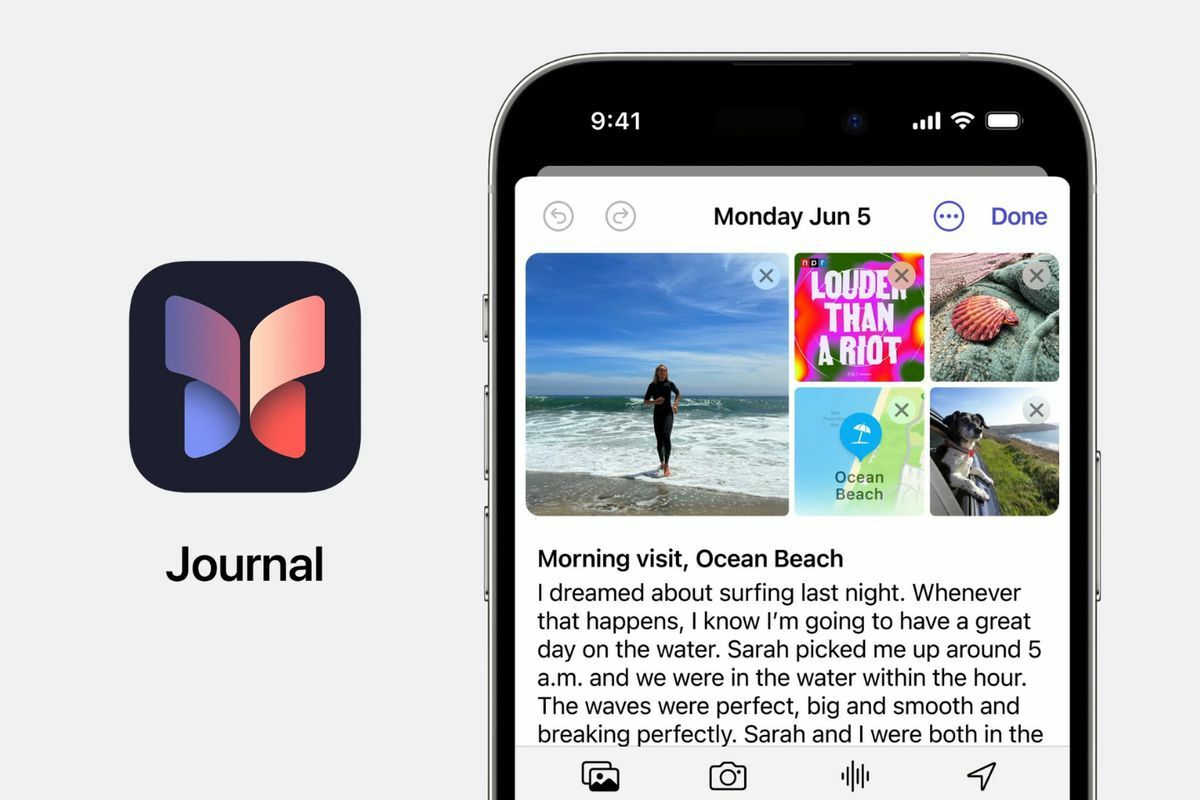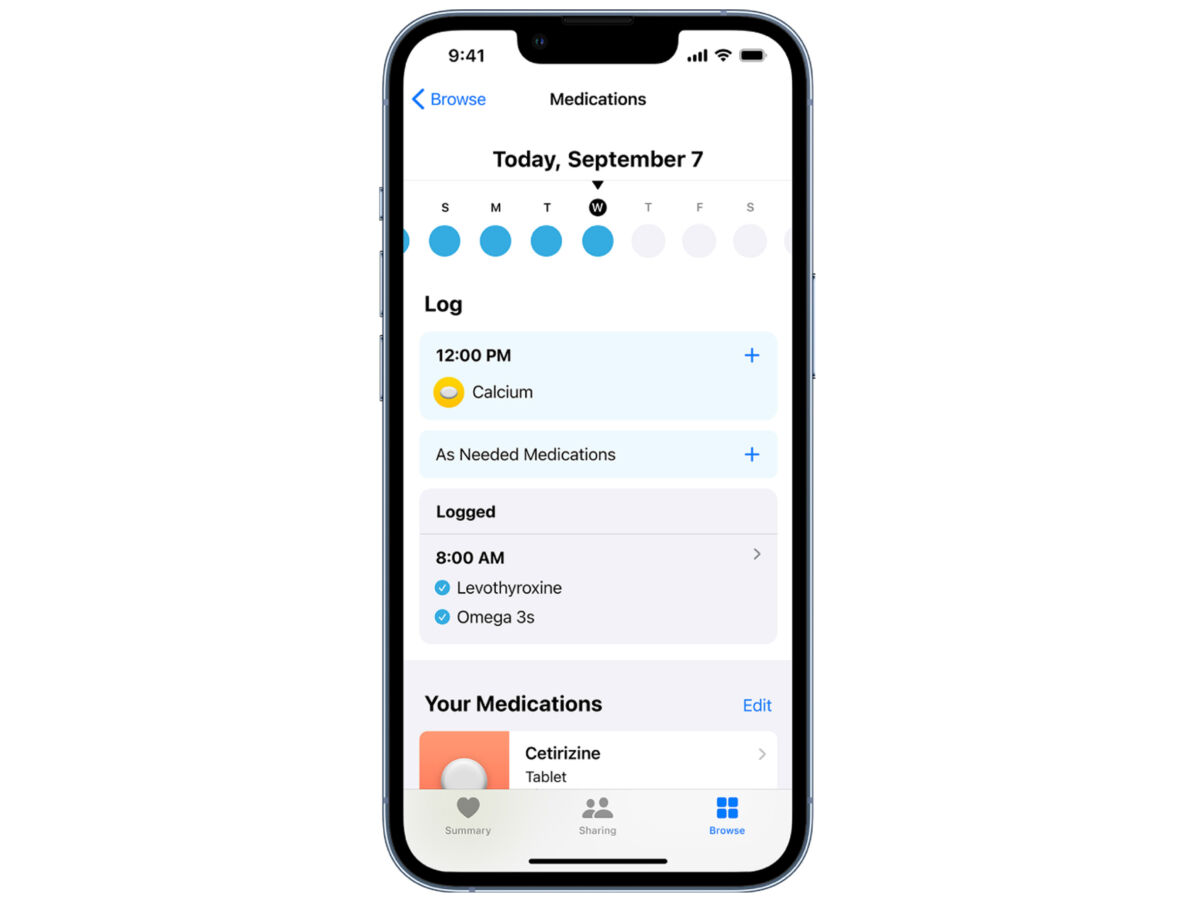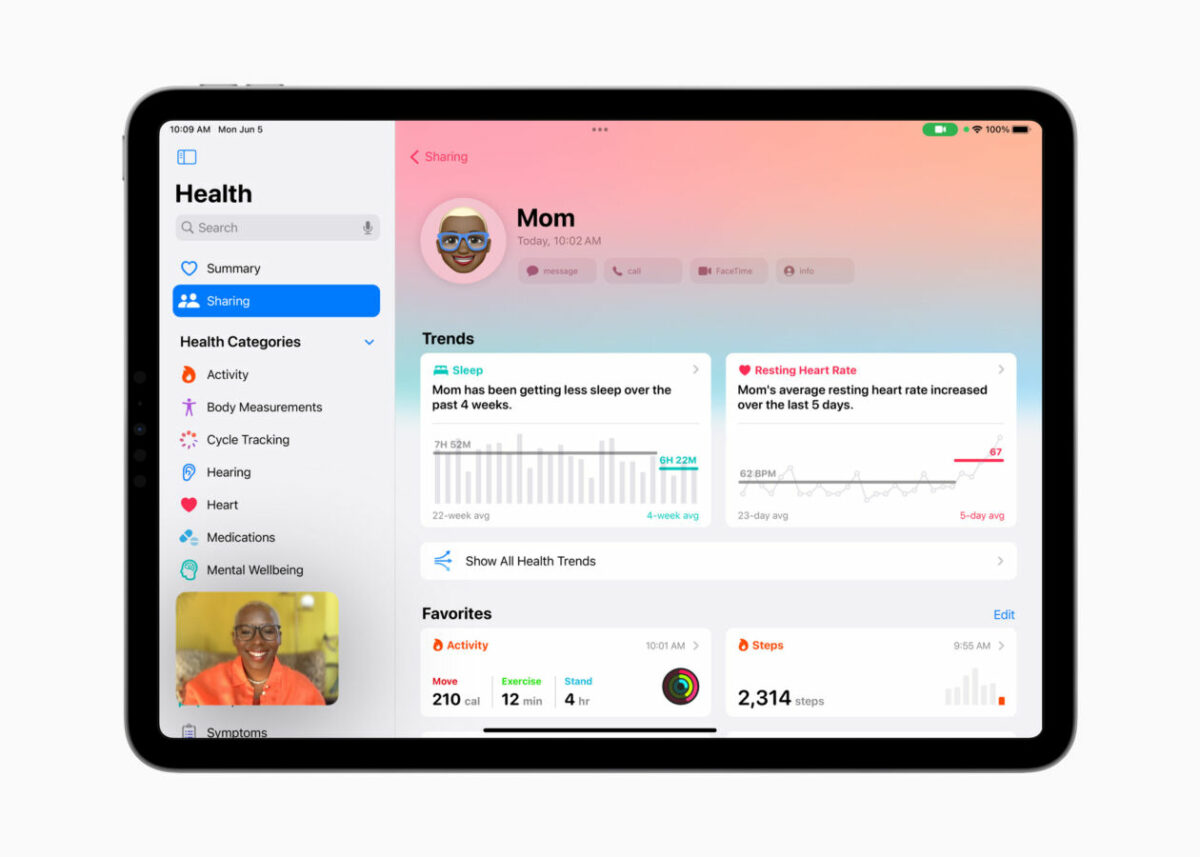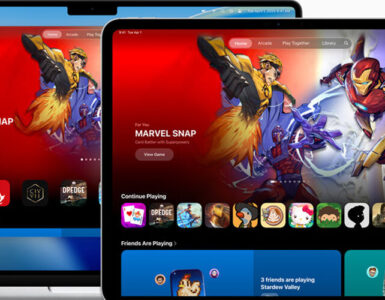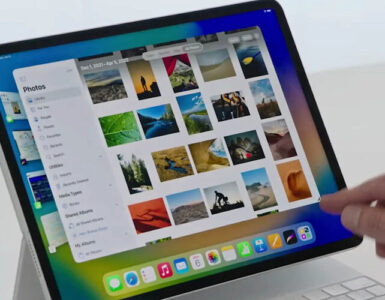Tech and fitness now go hand in hand, and Apple has been leading the way with its Health app supported across a series of devices, focusing on the well-being of its users. Since 2014, the Health app has made it easy for users to access health and fitness information, providing users with meaningful insights to living a healthier life, and as announced at WWDC 2023, Apple has improved what the app can do, and what it means for users.
For starters, the Health App is coming to the iPad with the upcoming iPadOS 17, where it has been designed to give users rich details at a glance, so they can see information from the iPad, iPhone and Apple Watch, as well as compatible third-party apps and devices, all in one place.
Now users can track and manage their medications, use Cycle Tracking, log their momentary emotions and daily moods, and view their available health records directly on iPad. On the iPad, the design of the Health app is optimised for a large display, with a new look for Favourites and detailed interactive charts.
But that’s not all Apple has to offer. In addition to bringing the Health app to the iPad, here are 6 ways Apple’s Health app helps to track fitness and mental wellness.
1. Log your feelings in a diary
For a long time, users have associated the Apple Watch with fitness and physical health. The Workout app and the Activity app have worked wonders in reminding users to integrate exercise into their lifestyle – no matter how big or small. This time, the tech giant is targeting mental wellness, and not just on the watchOS, but across iOS and iPadOS too.
In the Health app in iOS 17 and iPad OS 17, and the Mindfulness app in watchOS 10, users can reflect and log their state of mind by scrolling through engaging, multidimensional shapes and choose how they are feeling in the range from ‘Very Pleasant’ to ‘Very Unpleasant’. After which, they can select associations that are having the biggest impact on their feelings like Family or Travel, and describe their feelings.
Essentially, you treat it like a journal or diary for your emotions of sorts, but on an app that will gather all the data for you and can only be accessible by you, anytime, anyplace on any one of your devices. After logging in for a period of time, users will learn valuable insights and identify what are some contributing factors to their state of mind – whether it’s associations or lifestyle factors like lack of sleep or exercise. Knowing what factors affect one’s mental wellness may help users manage their overall health a lot better!
2. Access to assessments and resources
Therapy is a privilege to some and may not be the most accessible to those who need it. With Apple’s Health app, the same depression and anxiety assessments often used in clinics are now available at the tips of users’ fingertips.
These assessments can help users determine their risk level and if a professional therapist is required. At the same time, the Health App can connect to resources available in their region and create a PDF to share with their doctor.
Bonus point: you can take these tests anytime, anywhere!
3. Track daylight time for children
An organ we use a lot but don’t take care of enough is our eyes, so the Apple Health app is placing some focus on vision health and combatting myopia this time around. It is recommended that children spend at least 80-120 minutes a day outdoors, in daylight. It is said that time spent in daylight can help reduce the risk of myopia in children and is beneficial for physical and mental health. After all, which child doesn’t enjoy some play time in the sun?
That said, Apple is bringing daylight tracking. In the Health app, users can view the amount of time spent in daylight detected by their Apple watch using the ambient light sensor. The tracked data can be viewed in the Health app on iOS 17 and iPadOS 17. Of course, not all children have their own iPhone or iPad, so parents can use Family Setup to pair their child’s Apple Watch to their iPhone and view the amount of time their little ones spend in daylight.
4. Keep a safe eye distance
How many times have we heard reminders from our parents or those nearby to not get too close to the screen? Well, with the new Screen Distance feature your loved ones don’t have to keep nagging. The new Screen Distance feature uses a TrueDepth camera on iPhone and iPad to remind and encourage users to move their device farther away after holding it closer than 30cm for an extended period of time. Not only does Screen Distance encourage younger users to practice healthy viewing habits, but it also gives adult users the opportunity to reduce eyestrain. These habits over time lower the risks of myopia in users.
5. Journal on the go
The new Journal app on iOS17 gives users an outlet to reflect and practice gratitude through writing about and remembering life’s moments. Journaling helps the writer to also prioritise problems, fears and concerns, track day-to-day symptoms so triggers can be recognised, and provide a space and opportunity for positive self-talk and identifying negative thoughts and behaviours. These lead to benefits like a boost in mindfulness, memory and communication skills.
The new Journal app leverages the new Journaling Suggestions API to offer a personalised set of moments to write about like a user’s recent activity, including photos, people, places, workouts and more.
6. Medication reminders
The Medications feature is something that will be helpful for Apple users who are already on some form of medication for their physical or mental health. This new feature available on iOS 17, iPadOS 17 and watchOS 10 will send follow-up reminders to users if they haven’t logged taking a scheduled medication. Users can also make reminders as critical alerts, which allows the reminders to come through even if a device is muted or has Focus mode enabled.
Of course, all of the health and fitness data logged into the Health app is encrypted on-device – regardless if it is locked with a passcode, Touch ID or Face ID on the iPhone and iPad.
Data in the Health app is never shared with any third party without the user’s explicit permission too. If users decide to share their health data, the Health app provides users with control over the types of data they wish to share, and who they want to share it with too. Users can review and manage permissions at any time.
All these features will be available this Fall as a free software update for iPhone Xs and later, iPad (6th gen and later), iPad mini (5th gen and later), iPad Air (3rd gen and later), 12.9-inch iPad Pro (2nd gen and later), 10.5-inch iPad Pro and 11-inch iPad Pro (1st gen and later), Apple Watch Series 4 or later paired with iPhone XS or later, running iOS 17.


